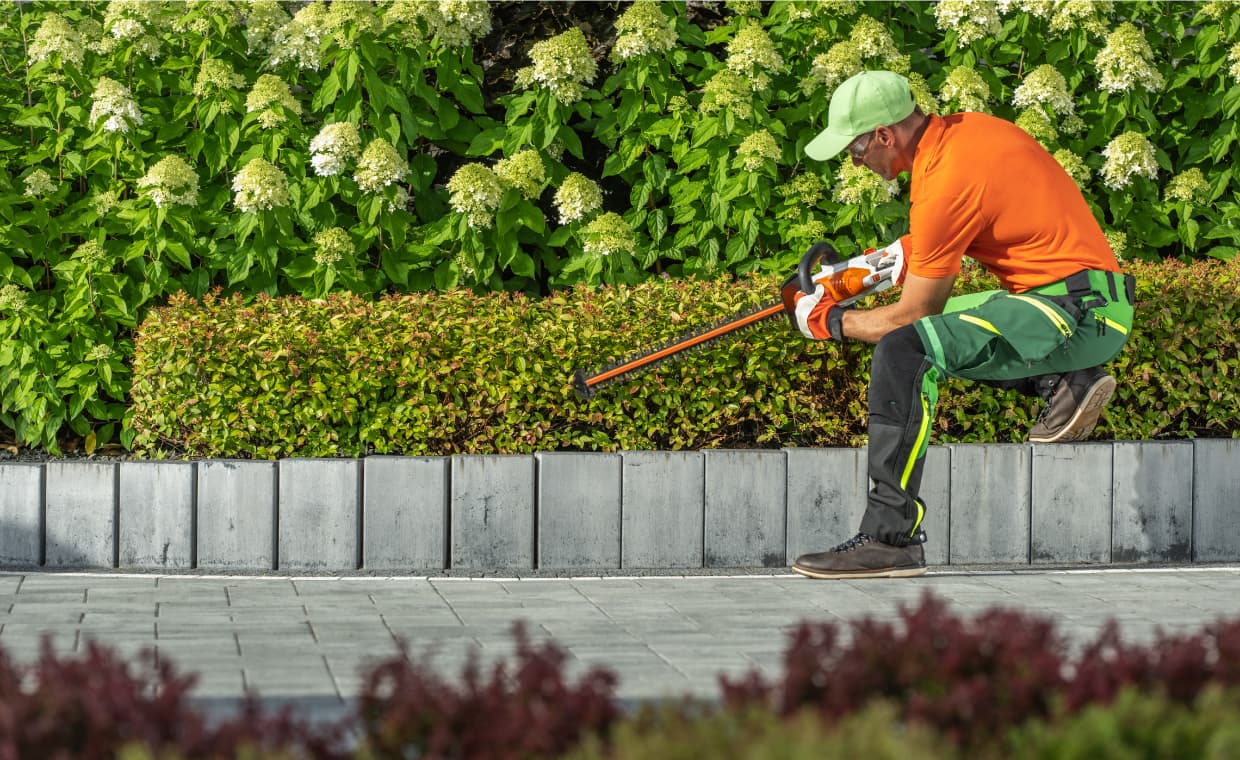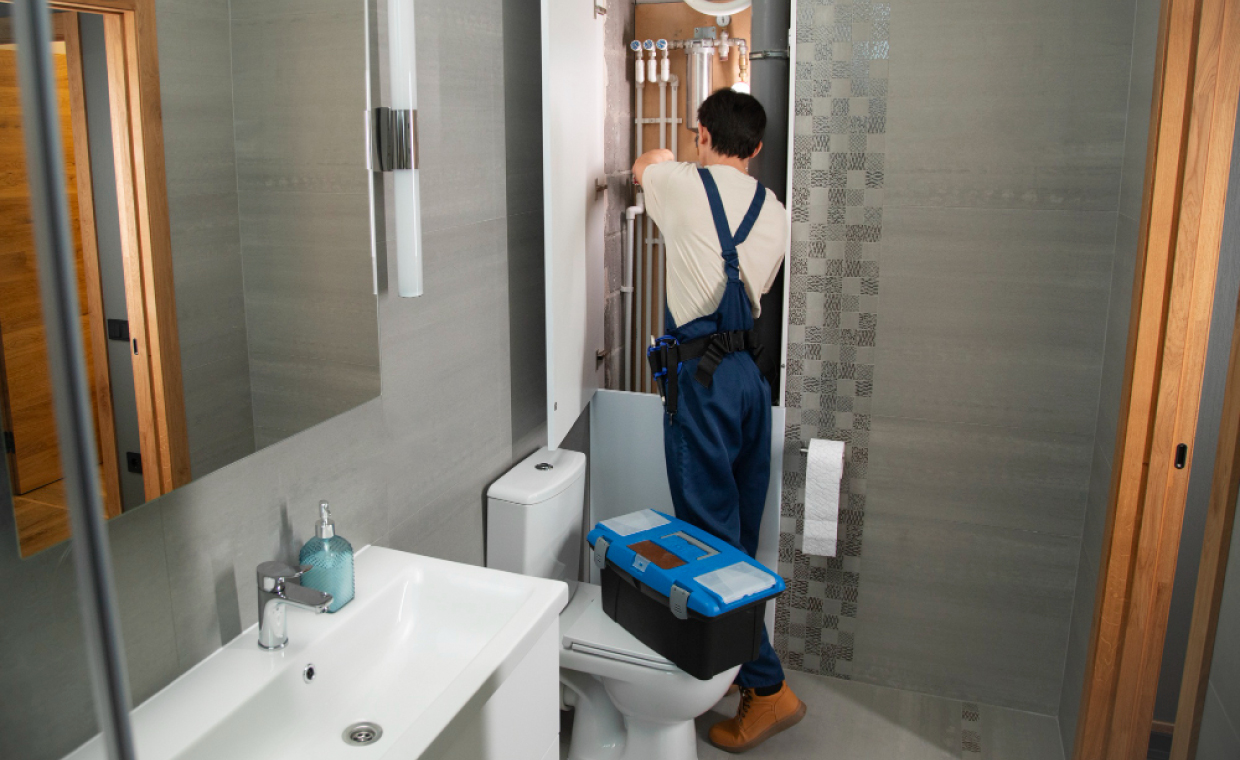
Prior to beginning the work of landscape design and maintenance, it is important to become familiar with the layout and topography of your large yard. Find out which parts get full sun, partial shade or complete shade during different times in a day. Make a note of any slopes along with patterns for water drainage as well as soil types that might affect growth and upkeep efforts related to plants.
Landscape Design and Maintenance Guide
This evaluation is the basis for designing landscaping elements and maintenance routines that suit the distinct traits of your yard.
01. Developing a Comprehensive Landscape Maintenance Plan

Make a full maintenance plan which gives details about regular works like cutting grass, giving water to plants, spreading fertilizer and controlling pests. For big yards, it may be useful to buy good tools such as compact tractors for making these jobs easier and less hard on workers. Make sure you set up a timetable for the usual upkeep activities so that it is done regularly and stays in good condition. Change tasks according to seasons like spring or summer when weather changes affect how plants grow and need care from you.
02. Choosing Appropriate Plants and Trees

In a big yard, the most important part of planning for an attractive and lasting landscape is selecting suitable plants and trees. You should pick species that are native to your area or can resist drought, these types will grow well in the climate and soil conditions of where you live. This means they need less water and looking after. Put a mixture of shrubs, plants that come back every year and decorative grasses in your landscape design to give it texture, colour variety as well as interesting features throughout all seasons. Think about how big plants will become and their speed of growth, this will help you plan their spacing correctly to prevent overcrowding. If you are unsure of how to pick the right plants, engage landscape designers to get the right advice for a stunning backyard space.
03. Implementing Efficient Irrigation Systems

For a big yard, good irrigation systems are important to keep plants healthy and save water. Put in place drip irrigation or soaker hoses for exact watering straight to the roots of the plant, reducing evaporation and overflow. Add timers or intelligent controllers that change watering times according to weather conditions and the plant’s demand for water. Use rain barrels or underground cisterns for collecting and reusing rainwater, decreasing reliance on city water and supporting sustainability.
04. Creating Functional Outdoor Living Spaces

Organize functional living spaces in the large yard that suit your way of life and likes. Create zones for entertaining, eating, and resting by adding elements like patios, pergolas, fire pits or seating arrangements. Join paths with materials such as pavers or natural stones to link various parts of the garden together and make it easier to reach them. Consider incorporating landscape lighting to extend outdoor enjoyment into the evening hours.
05. Maintaining Lawn Health and Appearance

In big garden landscaping, making and keeping a green and strong lawn is very important. You have to cut the grass regularly, but not too short because this can stop its roots from growing deep. It’s good to let the grass stay at least 2 inches tall so it can handle hot weather better without getting too stressed out. Also, you should consider aerating soil that has become hard because it helps with airflow and taking in nutrients for healthy growth of your grass. Give fertilizer and treatment to control weeds, doing this when it is necessary and follow what the manufacturer says so you don’t apply too much. You may think about spreading more seeds over areas that have no grass to keep your lawn even in coverage and thickness.
06. Managing Wildlife and Pests


In big yards, various wildlife and pests could come, affecting the health of plants and how landscape looks. Use methods like building fences or putting up nets as well as natural repellents to safeguard gardens and decorative plants from deer, rabbits, or other browsing creatures. Keep an eye out for indications of insect pests or illnesses that might need specific treatments in order to avoid harm. Use companion planting and beneficial insect habitats for pest control and ecological health.
07. Sustainable Landscape Practices


Use a type of organic mulch, like wood chips or shredded leaves. They keep moisture in soil and help to stop weed growth as well as enhance the structure of soil over time. Employ methods of integrated pest management (IPM) for reducing dependence on chemical pesticides, choosing natural substitutes whenever feasible. Make a compost pile for yard waste and natural materials. This will improve soil’s fruitfulness and lessen landfill contributions, helping a complete loop method in looking after the yard.

Conclusion
Looking after a big yard and making its landscape need careful thinking, ongoing care, and sustainable methods for achieving long-lasting beauty and usefulness. You must understand the layout of your yard, make an all-inclusive plan to maintain it well, choose plants that are suitable for the area, set up water systems that use less energy but work effectively, create useful outdoor places, keep grass healthy; manage wildlife as well as pests in a good way while also being careful towards environment friendly practices – these are all important steps if you want to make sure your landscape improves how attractive your property looks while promoting environmental responsibility at same time.
And before you leave, don’t forget to read the following article too:






























